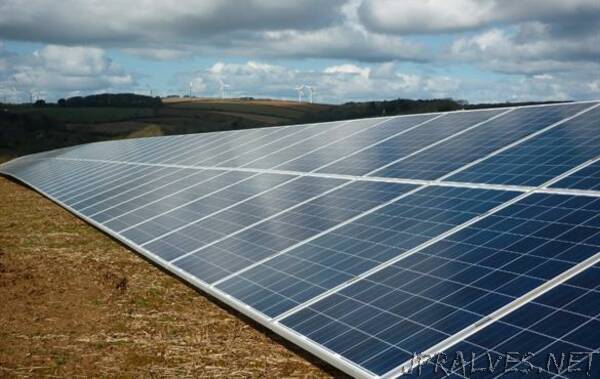
“Engineers at Washington University have developed what they believe is a more stable, less toxic semiconductor for solar applications using a novel double perovskite oxide.
Rohan Mishra, assistant professor of mechanical engineering & materials science in the McKelvey School of Engineering, led an interdisciplinary, international team that discovered the new semiconductor, which is made up of potassium, barium, tellurium, bismuth and oxygen (KBaTeBiO6). The lead-free double perovskite oxide was one of an initial 30,000 potential bismuth-based oxides. Their work has been published in Chemistry of Materials.
Using materials informatics and quantum mechanical calculations on one of the world’s fastest supercomputers, Arashdeep Singh Thind, a doctoral student in Mishra’s lab based at Oak Ridge National Laboratory, found KBaTeBiO6 to be the most promising out of the 30,000 potential oxides.
“We found that this looked to be the most stable compound and that it could be synthesised in the lab,” Mishra said in a statement. “More importantly, whereas most oxides tend to have a large band, we predicted the new compound to have a lower band gap, which is close to the halide perovskites, and to have reasonably good properties.”
According to Washington University, the band gap is the energy barrier that electrons must overcome to form free carriers that, in the context of a solar cell, can be extracted to power an electrical device or stored in a battery. The energy to overcome this barrier is provided by sunlight. The most promising compounds for solar cell applications have a band gap of about 1.5eV, Mishra said.
Mishra discussed the possibility of synthesising KBaTeBiO6 with Pratim Biswas, assistant vice chancellor, the Lucy & Stanley Lopata Professor and chair of the Department of Energy, Environmental & Chemical Engineering. Shalinee Kavadiya, a postdoctoral research associate at Arizona State University, perfected the compound.
“Shalinee spent about six months synthesising the material,” Mishra said. “Once she was able to synthesise it, as we had predicted, it was stable and had a band gap of 1.88eV, which we also predicted.”
Mishra said these are first-generation solar cells that need more fine tuning of the band gap, but it is a good first step toward non-toxic solar cells.
“This shows that we can go away from these lead-halide perovskites,” Mishra said. “This opens up a really big space for designing semiconductors not just for solar cell applications but also for other semiconductor applications, such as LCD displays.”
The team now plans to investigate the role of any defects in this new semiconductor and look to more advanced synthesis techniques.”
